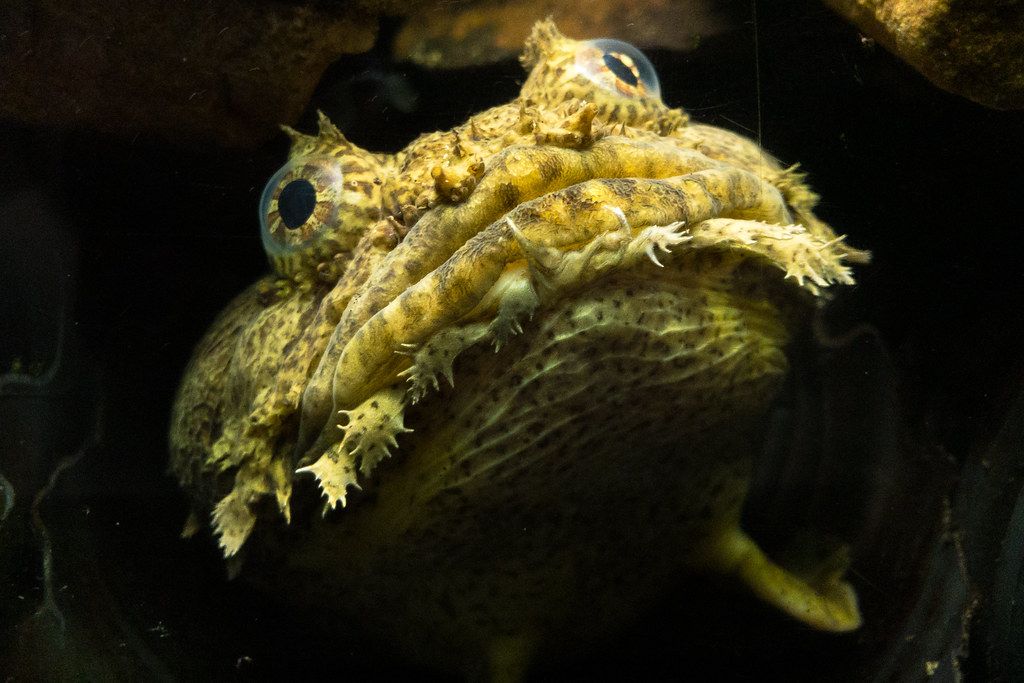Oyster Toadfish
Opsanus tau
The oyster toadfish is a bottom-dweller that lives year-round in oyster reefs and other shallow parts of the Chesapeake Bay.
This section shows one large critter image at a time. Use the thumbnails that follow to select a specific image to display here.

This gallery contains a grid of small thumbnails. Selecting a thumbnail will change the main image in the preceding section.
Appearance
The oyster toadfish's scaleless, flattened body grows to about 12 inches in length. It has an olive-brown back with dark blotches or bars, and a pale belly. Fleshy flaps or “whiskers” appear on its cheeks and jaws. Big, bulging eyes rest on the top of its large, flat head. Its broad mouth is filled with strong, rounded teeth.
Feeding
The oyster toadfish feeds mostly on small crabs and other crustaceans but will also eat mollusks and small fish.
Predators
Toadfish may be eaten by sharks. They protect themselves from predators with their strong jaws and spiny dorsal fin, and will hide from predators within oyster reefs, rocky areas and other debris.
Voice
Spawning males make a distinctive “foghorn” call to attract a mate.
Reproduction and life cycle
Spawning occurs in April through October in the Bay’s shallows. Males make a nest in a dark, secluded location, then call for a female mate. The female lays sticky eggs on the top of the nest, then leaves. Oyster toadfish eggs measure about one-fifth of an inch in diameter – the largest eggs of any fish in the Bay.
The male protects the eggs and keeps the nest clean by using his fins to fan out debris. After about one month, the eggs hatch. The tadpole-like young remain attached to the nest by a yolk. Once the yolk is fully absorbed, the male guards the young toadlets for a few more weeks, although they are free to swim in and out of the nest.
Did you know?
- An oyster toadfish will quickly take an angler's bait. But be wary of catching this fish — it has powerful, snapping jaws and sharp spines on its dorsal fin.
- The hardy oyster toadfish can tolerate litter and polluted water, and can survive out of water for a lengthy period of time.
Sources and additional information
- Fishes of Chesapeake Bay by Edward O. Murdy, Ray S. Birdsong and John A. Musick
- Life in the Chesapeake Bay by Alice Jane Lippson and Robert L. Lippson
- Oyster Toadfish – University of Rhode Island
